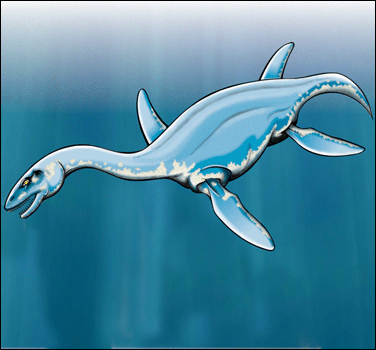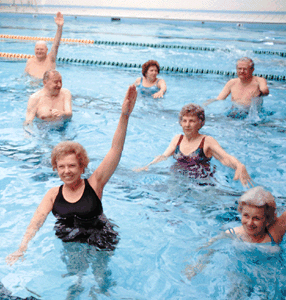Ancient Reptile Had Aches and Pains
Wednesday, May 16th, 2012May 15, 2012
Scientists studying the fossil of a monstrous ocean-dwelling reptile that lived about 150 million years ago found evidence that the fearsome carnivore was even tougher than they had imagined. The reptile, a female pliosaur, had apparently survived into old age even though its massive jaw had been seriously weakened by a condition similar to arthritis. Until this finding by researchers at the University of Bristol in the United Kingdom, scientists had not known that pliosaurs could develop a degenerative disease that is often linked to the aging process.
Pliosaurs were a type of plesiosaur, a now-extinct marine reptile that lived in the Mesozoic Era, from about 200 million to 65 million years ago. Pliosaurs, which were not dinosaurs, had large crocodile-like heads, short necks, and stiff whale-like bodies. The Bristol pliosaur was 26 feet (8 meters) long, with a 10-foot- (3-meter-) long head containing 8-inch- (20-centimeter-) long teeth. Paleontologist Michael Benton noted that a person could have lain down in the reptile’s huge mouth. Equipped with two pairs of flippers, pliosaurs were fast, powerful swimmers. Pliosaurs, which probably fed on large fish and other ocean reptiles, were the top predators (highest predators on the food chain) in the ocean for millions of years. Plesiosaurs evolved (developed gradually) from reptile ancestors that lived on land. Like modern whales, plesiosaurs had to surface to breathe air, and they likely gave birth to live young.

Pliosaurs were a kind of plesiosaur (above), a large ocean reptile that lived from about 200 million to 65 million years ago, during the time of the dinosaurs. Like plesiosaurs, pliosaurs had a round, stiff trunk and a tail. They had two pairs of flippers instead of arms and legs. (World Book illustration by Jay Bensen, Studio 3 Creative Associates)
The arthritis-like disease, which was likely painful, had caused the pliosaur’s left jaw to shift to one side. Tooth marks from the upper jaw in the bone of the lower jaw indicated that the pliosaur had survived for a numer of years even with a crooked jaw. The scientists also found that a tooth from the lower jaw had apparently caused an infection in a tooth socket of the upper jaw. At some point, the jaw had become so weak that it broke and the animal was unable to hunt. The pliosaur’s large size and fused skull bones suggested that it was old when it died.
Additional World Book articles:



